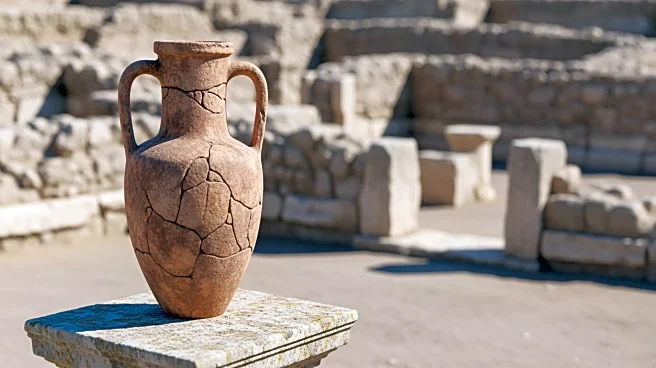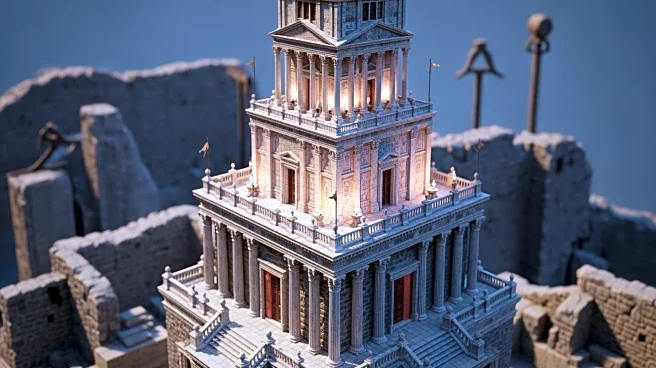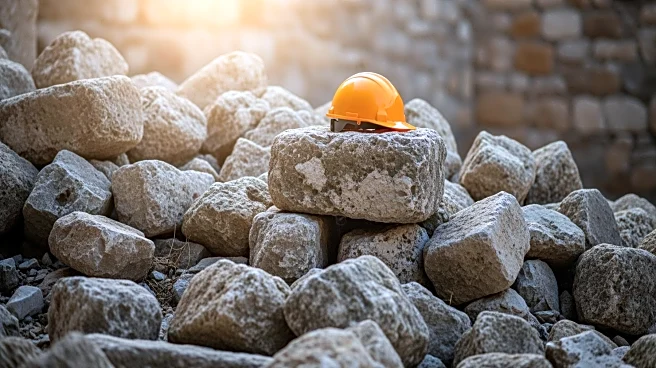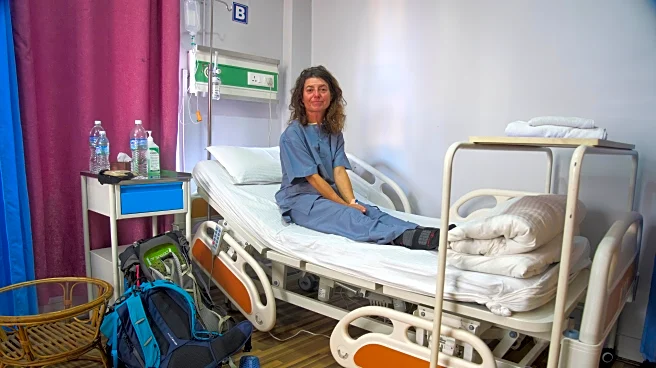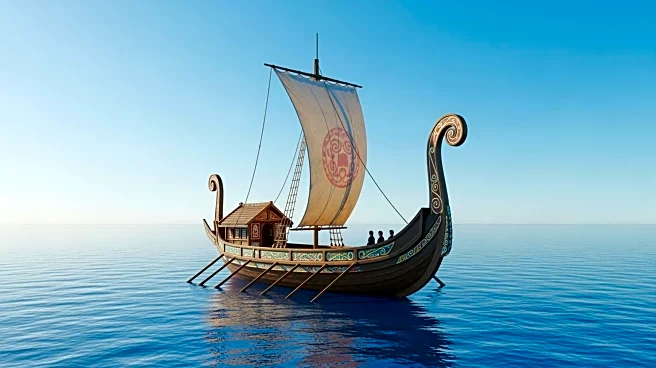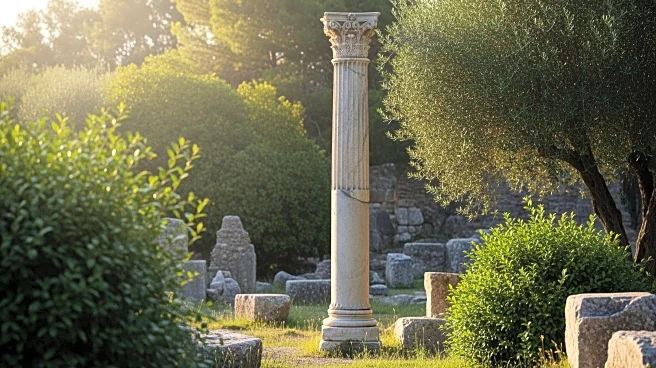What's Happening?
Archaeologists from the University of Missouri have uncovered the ruins of Gabii, an ancient city located about 11 miles east of Rome. The discovery includes a massive stone basin dating back over 2,000
years, believed to be built around 250 B.C. This structure is considered one of the earliest examples of large-scale Roman public architecture outside of temples and city walls. The findings suggest that Gabii was once a powerful rival of Rome, with cultural and architectural influences from Greek traditions.
Why It's Important?
The discovery of Gabii's ruins provides valuable insights into the early development of Roman architecture and urban planning. It highlights the cultural and historical significance of Gabii as a rival city to Rome, offering a glimpse into the complex relationships and rivalries between ancient Italian city-states. The findings contribute to the understanding of Roman history and the spread of Hellenistic culture in Italy. This archaeological work may lead to further discoveries that could reshape historical narratives about the region.
What's Next?
Further archaeological excavations are planned for 2026 and 2027 to explore more of Gabii's ruins. Researchers aim to uncover additional structures and artifacts that could provide a more comprehensive understanding of the city's history and its role in the ancient world. The ongoing work may reveal new information about the social, economic, and political dynamics of the time, potentially leading to new interpretations of Roman and Italian history.
